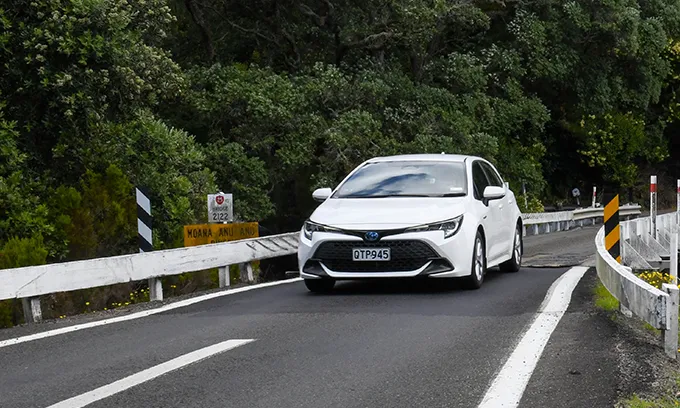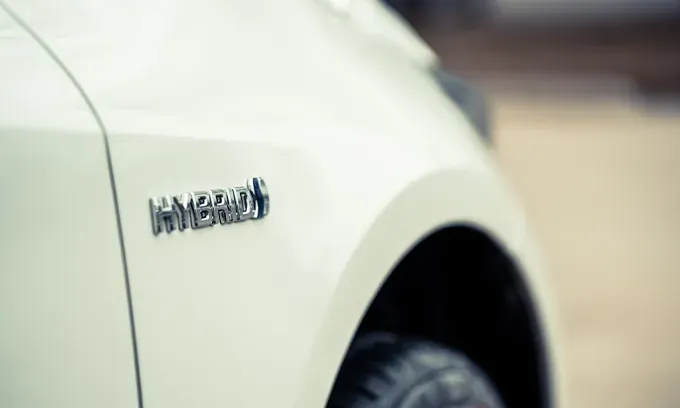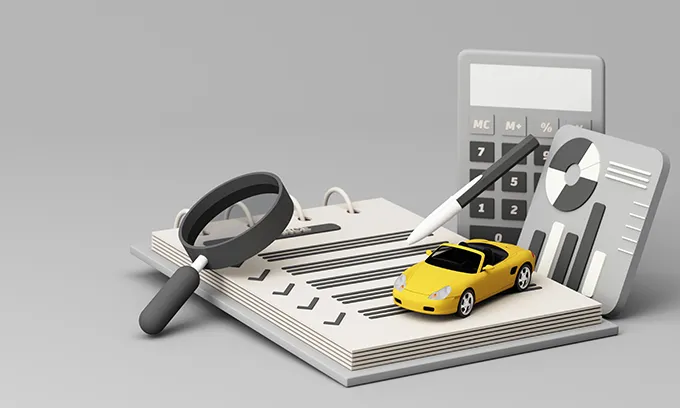Three expert car insurance buying tips
Three simple rules can help you save money when purchasing car insurance, without having to compromise on your level of cover:
Don't set and forget: avoid the temptation to auto-renew
Insurance companies often don't offer their best deals to their existing customers, hoping that they'll just renew without much thought.
So when it’s time to renew your car insurance, don’t just accept your insurance company's automatic renewal offer without comparing prices across other providers.
You might find a better deal or policy that better matches your needs. And don't be afraid to ask you insurer to match any competitor offer. Ultimately, they won't want to lose your custom.
Don’t get sucked in by offers and bundling deals
While sign-on offers and deals for bundling with other types of insurance (such as home and contents) can seem appealing, they shouldn’t be your sole focus when shopping for car insurance. These discounts are often used as marketing tools to make a policy seem more attractive, and the overall price of a policy and the coverage it offers are what truly matter.
ALWAYS read the fine print of the policy's Product Disclosure Statement (PDS)
Before committing to any car insurance policy, take time to thoroughly read and understand its terms and conditions. For while it's important to ensure the policy provides the cover you require – such as comprehensive coverage for accidents, fire and theft – it's also important to understand the policy's exclusions – what it doesn't cover – so you're not left underinsured and out of pocket in the event of a claim.
What is car insurance?
Car insurance gives drivers some protection from financial loss if their car is involved in an accident, is stolen, is damaged in a weather event or another risk included on your policy. If your car is damaged or written off, or you damage someone else’s vehicle in an accident, the cost to you could be significant, and a car insurance policy is designed to cover the majority of that cost.
Comprehensive car insurance is the highest level of car insurance coverage. It provides a level of financial cover for damage to other people’s cars and property in an accident, damage to your own vehicle caused by fire or theft, and accidental damage to your own vehicle, regardless of who caused the damage. It may also provide additional types of cover, such as damage to your car from storms or vandalism, depending on the insurer and policy you choose.
A comprehensive car insurance policy may also let you choose between market value and agreed value for your policy, meaning you could get a say in how much you’ll be paid in the event that your car is stolen or written off, depending on the policy. However, your choice may affect your premiums.
Choosing the policy that’s right for you could depend in part on what you can comfortably afford, so it may be worth considering the type of cover that suits your needs and your budget. For example, would you prefer the high level cover generally offered by a comprehensive policy, or would a lower level of cover be enough?
What does car insurance cover?
Car insurance covers policyholders for damage caused or costs incurred by unforeseen accidents or events involving the car they insure. The exact risks that are covered will depend on the level of cover that you have. For example, third party cover generally only covers costs if you damage someone else’s property in an accident, whereas comprehensive car insurance provides protection for a more extensive range of risks. Depending on the insurer and policy you choose, comprehensive car insurance could cover:
- Accidental damage
- Theft/vandalism
- Storm/flood
- Fire damage
- Earthquake
- Towing costs
- Transport from an accident
- Hire car costs following theft
- Hire car costs following a no-fault accident
What types of car insurance are available in New Zealand?
Although policies offered by different car insurers will vary, the types of car insurance can be boiled down to three levels of cover.
Third party insurance
The most basic type of insurance, it covers all or part of your legal liability if you harm another person or damage their property. You will not be covered for damage to your own vehicle.
Third party, fire & theft cover
This is the same kind of insurance as standard third party, with additional cover for fire damage and theft. Some insurance companies will have policies that also cover damage caused by natural disasters.
Comprehensive insurance
This is the highest level of car insurance, covering you for almost anything that could happen on the road, or by the side of it. If you damage yours or another person’s property, you won’t be required to pay the full amount for repairs – only the pre-agreed excess amount.
How do I compare car insurance quotes online?
Canstar’s Star Ratings are one factor you could use to help you compare comprehensive car insurance policies before getting a quote online. Our Ratings use a sophisticated and unique methodology that compares both price and features across products on our database. You can compare policies based on their Star Ratings using our above tables.
In addition, these are some of the other factors you may want to take into account when comparing car insurance policies:
- The premiums being charged
- The level of cover you are getting
- Whether the risks most relevant to you are covered by the policy (e.g. if your area is prone to flooding, you may want a car insurance policy that covers this)
- The level of service the insurer offers (e.g. its claims service)
- Whether the insurer allows you to pay monthly at no extra cost
- Any discounts offered by the insurer
- Are there any additional inclusions, either complimentary or at at any extra cost (e.g. roadside assistance)
What's the best car insurance for me?
The best car insurance policy for you will depend on your circumstances and the level of cover you are looking for. In assessing policies, you may like to ask yourself questions such as:
- Are you looking to keep premium costs down or are you willing to pay more for a higher degree of cover?
- How often do you think you’ll need to claim on the policy? Opting for a higher car insurance excess could save you some money on premiums, in exchange for leaving you with higher out-of-pocket costs should you have to make a claim.
- How often do you drive your car? If you rely heavily on your car, you might want to prioritise a higher level of cover so you won’t be off the road for too long if your car is damaged.
- Are there any particular risks that you want cover for? For example, is your area prone to flooding or car thefts?
- Would it be better for your budget to pay your premiums monthly or annually, and would you be prepared to pay more overall for the convenience of monthly payments?
- If you are looking for comprehensive cover, how have Canstar’s expert researchers rated the policies you are considering? This can give you an idea of which policies offer the best value for money overall, based on the factors considered.
Looking for the cheapest car insurance?
When you’re shopping around for cover, you may simply want to get the cheapest car insurance policy you can find. It can be important to also keep in mind the level of protection you’re getting for your money. For example, with optional forms of cover, third party property may be the cheapest car insurance in most situations, but it won’t cover you if your car is damaged in an accident or stolen.
Even if you decide on a higher level of cover, like comprehensive, there may be ways to keep the cost down. Some insurers offer discounts if you pay your premium annually or take out the policy online as opposed to over the phone, or you could opt to pay a higher excess if you need to make a claim. It can also help to shop around and compare quotes online from a number of insurers. These techniques may help you get value for your money, while still getting a higher level of cover than the cheapest car insurance might offer.
What's happening in car insurance news and deals in November 2025?
Car insurance news
- Tower has announced that it's removing multi-policy discounts for its customers. Over the rest of the year, new customers will stop receiving the discount, and it won’t be offered to existing customers renewing their policies. The move brings Tower in line with other major car insurers, including AA Insurance, AMI and State, who have already removed their multi-policy discounts.
- In its most recent General Insurance Digest, investment advice and services company Forsyth Barr forecasts that the worst in insurance premium increases is behind us, and that price hikes will reduce over the next year.
Car insurance deals
- Buy a new State Comprehensive car insurance policy online today and get a $100 digital Visa card. Offer ends March 31, 2026. Visit state.co.nz to quote and buy. See State website for Ts&Cs.
- Cove is offering all Canstar visitors one month free on their new car insurance policy, worth up to $100. Visit their website to get a quick online quote. Ts&Cs apply.
- AMI is on your side with a $100 digital Visa card when you take out a new Comprehensive Car Insurance policy online before March 31, 2026. Visit ami.co.nz to quote, buy. See AMI website for full Ts&Cs.
Compare car insurance options to suit your needs
- Best Car Insurance for Learner and Young Drivers
- Best Car Insurance for Families with Young Drivers
- Best Car Insurance for Drivers Aged 25-29
- Best Car Insurance for Drivers Aged 30-49
- Best Car Insurance for Older Drivers
Best-selling cars in New Zealand
Below is the top-10 most popular new cars in NZ so far this year, to the end of September. For the full details of the latest car sales, check out our story about the country's top-selling cars.
Top Selling Cars 2025
- Toyota RAV4: 7502
- Mitsubishi ASX: 3648
- Mitsubishi Outlander: 3063
- Kia Seltos: 2728
- Ford Everest: 2076
- MG ZS: 1529
- Suzuki Swift: 1436
- GWM Haval H6: 1293
- Toyota Land Cruiser Prado: 1286
- Toyota Corolla: 1280
Source: Motor Industry Association























